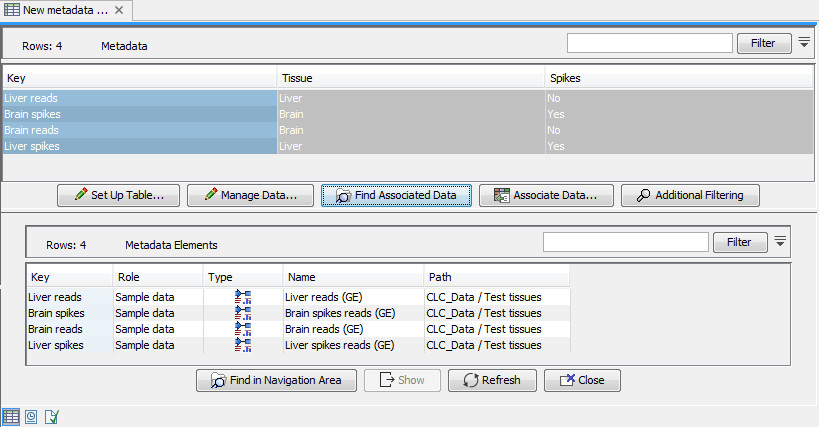RNA-Seq and Small RNA analysis
Based on an annotated reference genome, CLC Genomics Workbench supports RNA-Seq Analysis by mapping next-generation sequencing reads and distributing and counting the reads across genes and transcripts. Subsequently, the results can be used for expression analysis. The tools from the RNA-Seq and Small RNA Analysis folder automatically account for differences due to sequencing depth, removing the need to normalize input data.
RNA-Seq analysis, expression analysis, and other tools can be included in workflows. Designing a workflow that includes an RNA-Seq Analysis step, which is typically run once per sample, and an expression analysis step, typically run once to analyze all the samples, is described in Batching part of a workflow.
Metadata and RNA-Seq
The statistical analysis and visualization tools of the RNA-Seq folder make extensive use of the metadata system. For example, metadata are required when defining the experimental design in the Differential Expression for RNA-Seq tool, and can be used to add extra layers of insight in the Create Heat Map and PCA for RNA-Seq tools.
To get the most out of these tools we recommend that all input expression tracks are associated with metadata. Importing metadata and associated data elements with it is described in Metadata.

Figure 31.4: A metadata table with expression samples associated with it.
Subsections
- RNA-Seq normalization
- Create Expression Browser
- miRNA analysis
- RNA-Seq Tools
- Expression Plots
- Differential Expression
